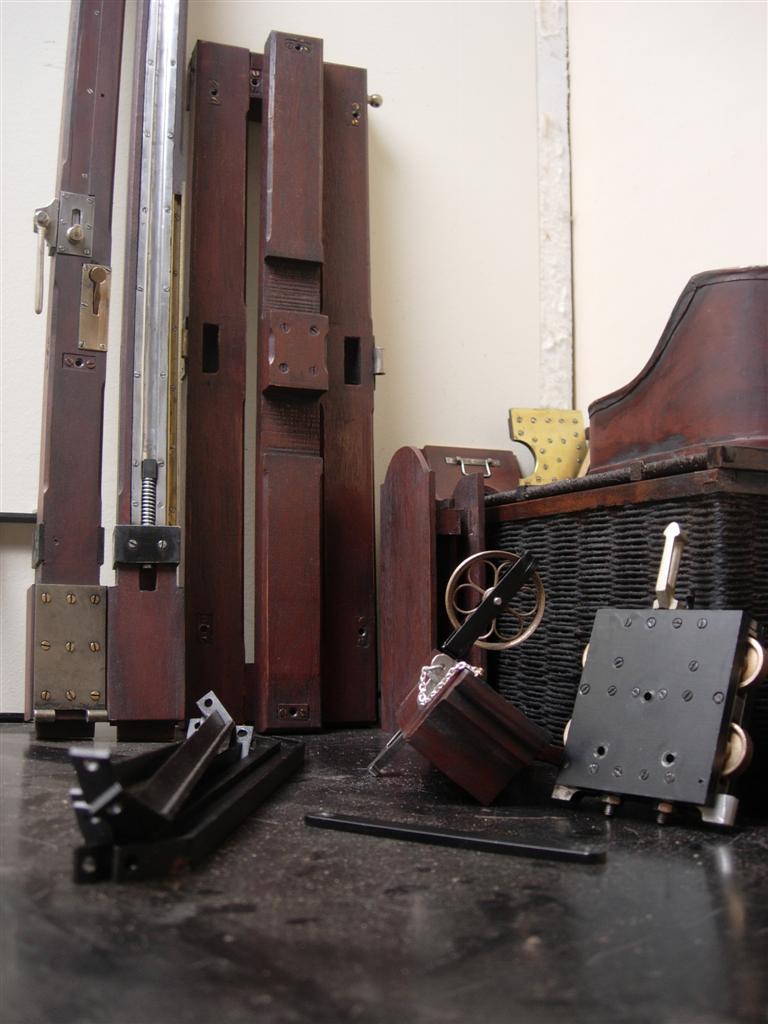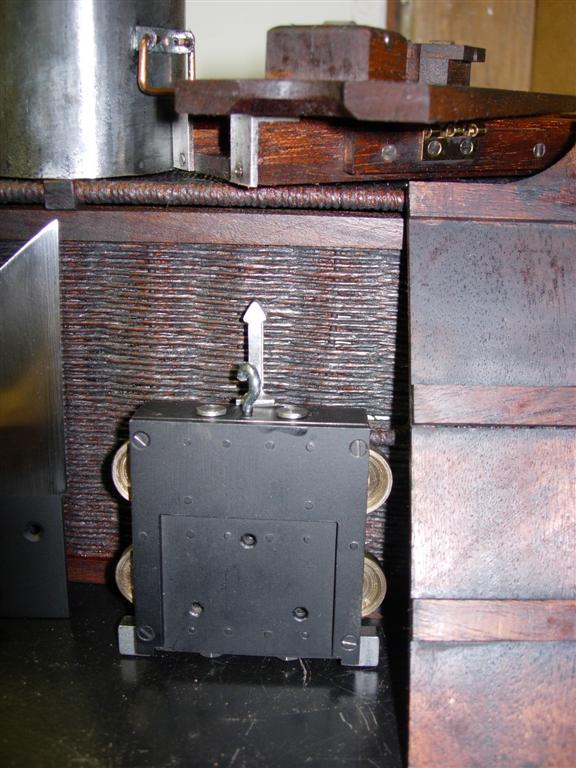
 |
My Berger guillotine models can be completely disassembled as seen in the shots on the left, where I have arranged the parts of two dismantled mahogany models as they would have been stored in Deibler's Folie-Regnault garage or in the shed at Fresnes prison. The lower photo shows one of my best copies of the mouton, which includes cast bronze rollers and a steel spike nearly identical in shape to the real one
After 1872, the real guillotine was always transported from city to city (and after 1939 from prison to prison) to execute condemned criminals. There was only one execution team and 2-3 guillotines for all of France. After 1977, executions for all of France were to take place at the Fresnes prison near Paris, however no one was executed there before the Death Penalty was abolished in 1981.
The design of the modern guillotine was optimized not only to make it easily transportable but also to allow quick and silent assembly required to keep the condemned prisoner unaware of the events to follow until the last minute. French law, unlike US law, specified that the condemned person must not know the time or date of his execution.
The model is designed to be taken apart along the same lines as the real machine. The bascule assembly is secured to the machine with just two nuts at the front and a single bolt at the rear. The lunette is simply slipped in and out of position through a cut-out in the left track and does not require any other assembly. All the main wood members lock together via mortise and tenon joints. Eighteen custom-machined bolts are threaded into embedded metal plates at all the main connecting points between the T-braces, frame, uprights, chapiteau and bascule support. As these bolts are removed the entire machine breaks down into assemblies that were easy to move. After dissassembly, the left post was stripped of the rope storage hooks, the lever and lever bracket were removed, the lunette lock button was pushed in and secured with a screw and the lever rest knob was unscrewed, leaving the post without any protrusions and making it easier to handle.
One of the benefits of copying the design of the real machine down to the connection details is that it makes my models very strong and rugged.
|